26 Movies Every Design Lover Should See
What is good design if not drama? (Ideally not comedy—or maybe just barely so.) The aesthetic visions we love, the kind that have us dog-earing magazines and Instagramming and occasionally cribbing ideas for ourselves, say more than we tend to express in words about where we are, what we need, and where we hope to go. In short, they form a narrative. Design is often similarly fundamental to great filmmaking—in the best cases, it amplifies the director’s intent, then runs away with the microphone for its own sake before dropping it. These are some of the best movies that design lovers (and movie lovers) should see.
Metropolis (1927)
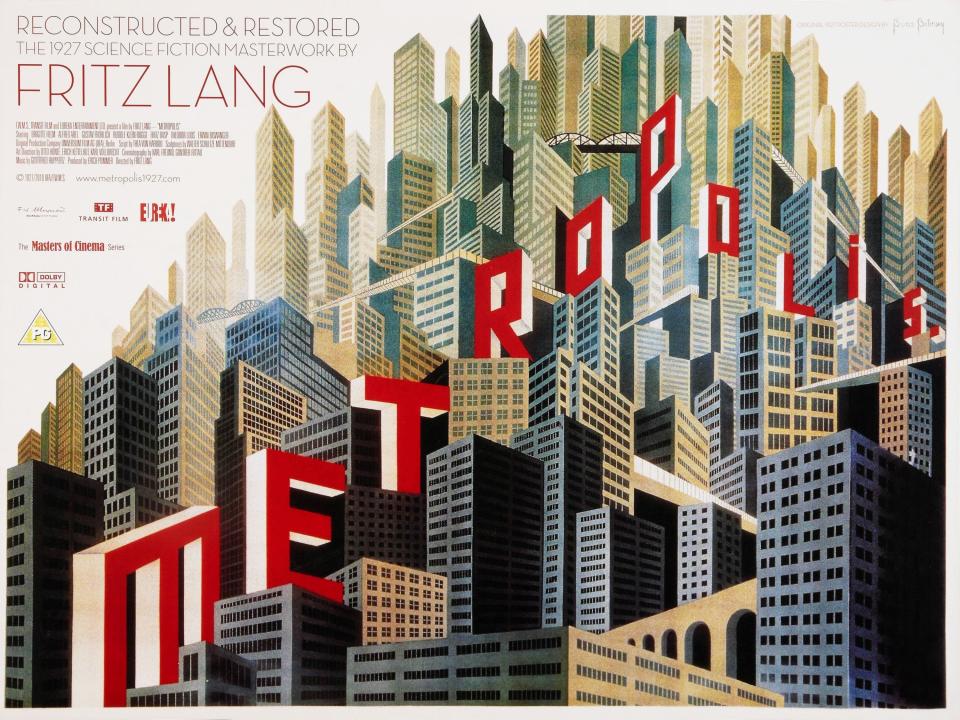
Metropolis
CGI has made movies less thrilling—today, no one breathlessly wonders, “How’d they do that?” To reclaim that feeling, watch Metropolis, a silent film that managed to set the template for future sci-fi epics, introducing the world to special effects. Its depiction of a lush world of oligarchs served by a society of proles, and rigged by a mad scientist, was jaw-dropping for the time. Its futuristic cityscape and cavernous, Art Deco–inflected interiors still manage to stun, making spoken words seem extraneous.
Breathless (1960)
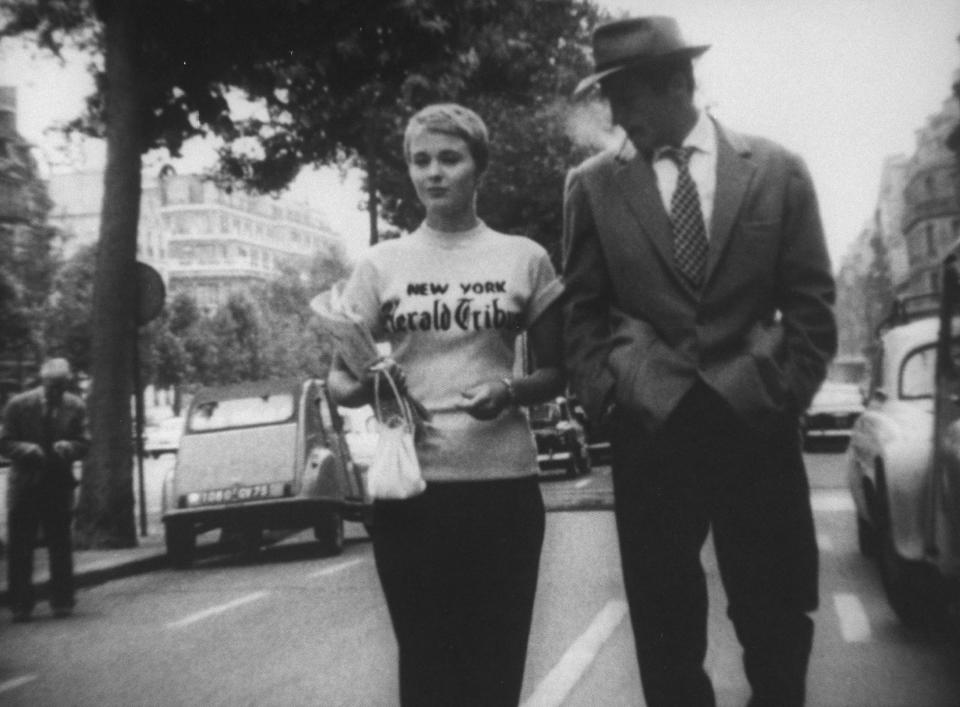
Jean-Paul Belmondo;Jean Seberg
The film that perhaps brought about the idea of effortless cool, Breathless put forward two style icons: Jean-Paul Belmondo in his slouchy suits, spotless fedora, and dangling cigarette; and Jean Seberg in her pixie cut and, well, everything she wore. The two lovers flirt and spar in moody black-and-white amid unglamorous hotel rooms and pedestrian Parisian settings, redefining the romantic epic for a new generation of indie filmmakers and -goers.
The Leopard (1963)
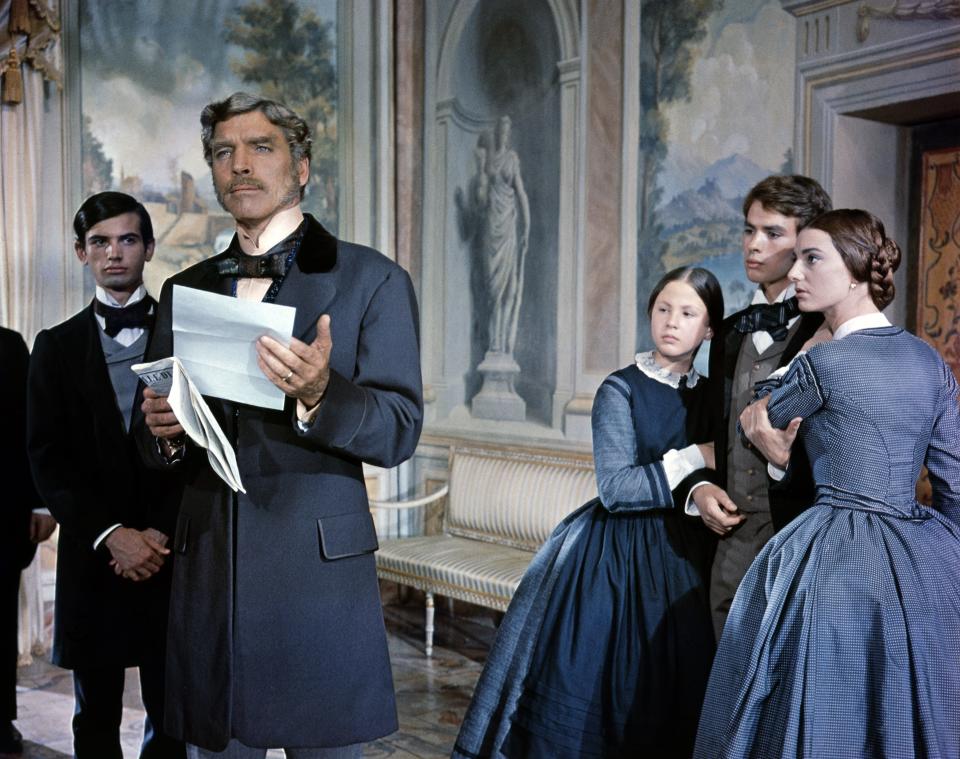
On the set of Il gattopardo
Directed by Luchino Visconti, this sumptuous Italian equivalent of Gone With the Wind captures the 1860s on the European Continent as seen by a nobleman (Burt Lancaster) trying to keep his family in power. If the premise doesn’t seem like a must-see, the product surely is: It’s sweepingly lush, boasting elaborately on-point period costumes, ballrooms, and battle scenes—not to mention the natural beauty of the Palermo countryside and Alain Delon.
The Umbrellas of Cherbourg (1964)
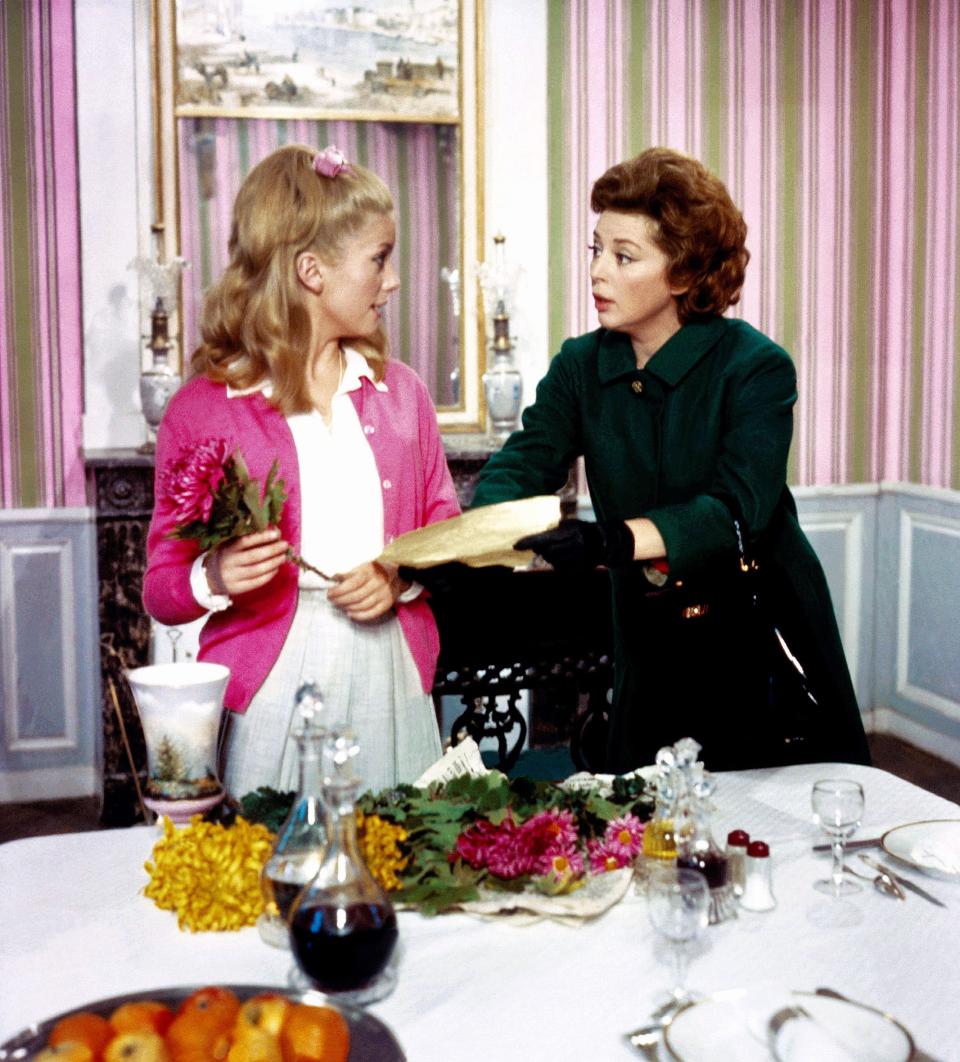
CATHERINE DENEUVE, ANNE VERNON, THE UMBRELLAS OF CHERBOURG, 1964
Sixties chic rarely looked chicer than in Jacques Demy’s bittersweet opera about star-crossed young lovers, largely thanks to Catherine Deneuve, who instantly launched her long reputation as a walking, talking (and here, sweetly singing) embodiment of timeless style. The film’s highlighter-hued walls and Necco-colored costumes—and the peachy halo that seems to surround Deneuve wherever she goes—combine to create one of the most effective uses of color in cinematic history, partly because it seems to foreshadow a fairy-tale ending that, alas, isn’t in the cards.
A Clockwork Orange (1971)
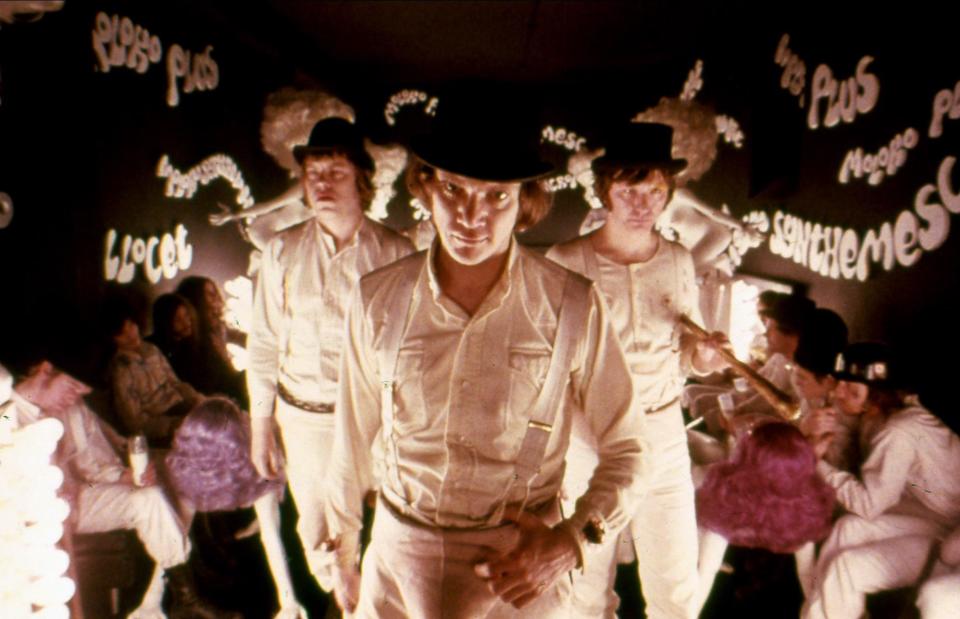
MALCOLM MCDOWELL, A CLOCKWORK ORANGE, 1971
The poster’s continued residence in thousands of dorm rooms—and the continuing popularity of Alex DeLarge (Malcolm McDowell) as a Halloween costume—speaks to A Clockwork Orange’s enduring pop influence. No less than the British Film Institute has cited Alex as inspiration to punks, David Bowie, and Madonna. The white-on-black Korova Milk Bar still registers as clubland heaven, and other scenes’ riotously patterned and textured sets and fabrics—which reflected the story’s tension between anarchy and order, lust and restraint—will never stop being an inspiration to those who yearn to mix things up.
The Harder They Come (1972)
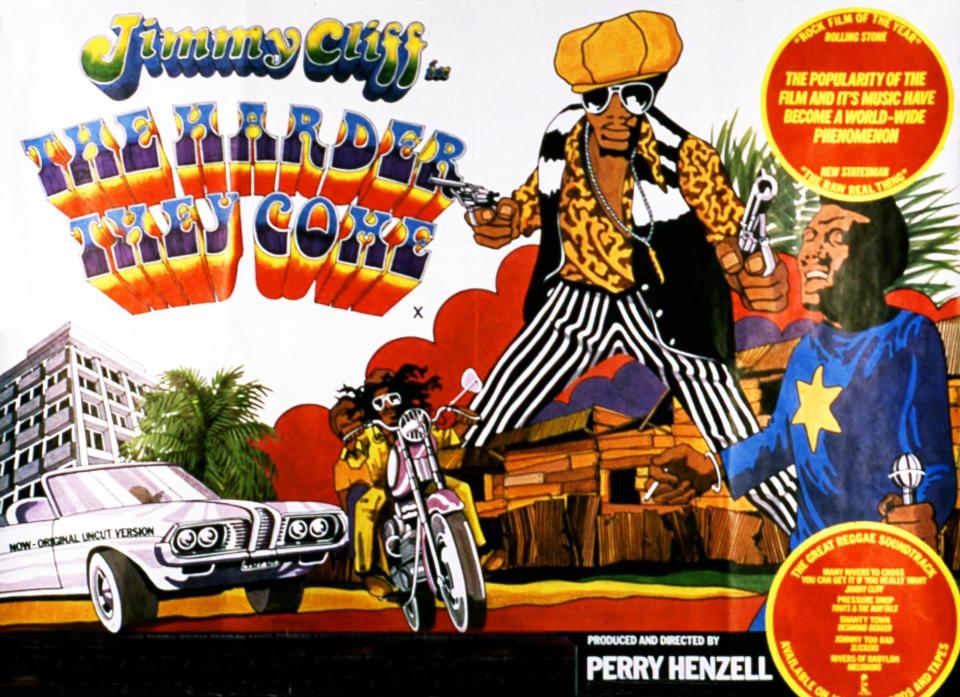
THE HARDER THEY COME Date: 1972
This early-’70s crime caper, one of Jamaica’s first independent films, is credited with introducing reggae to American audiences. But aside from having “one of the most infectious scores in the history of cinema,” as the New York Times declared, it’s also sharp and stylishly shot, all the way down to the wildly groovy clothes and shiny vintage cars.
Star Wars original trilogy (1977, 1980, 1983)
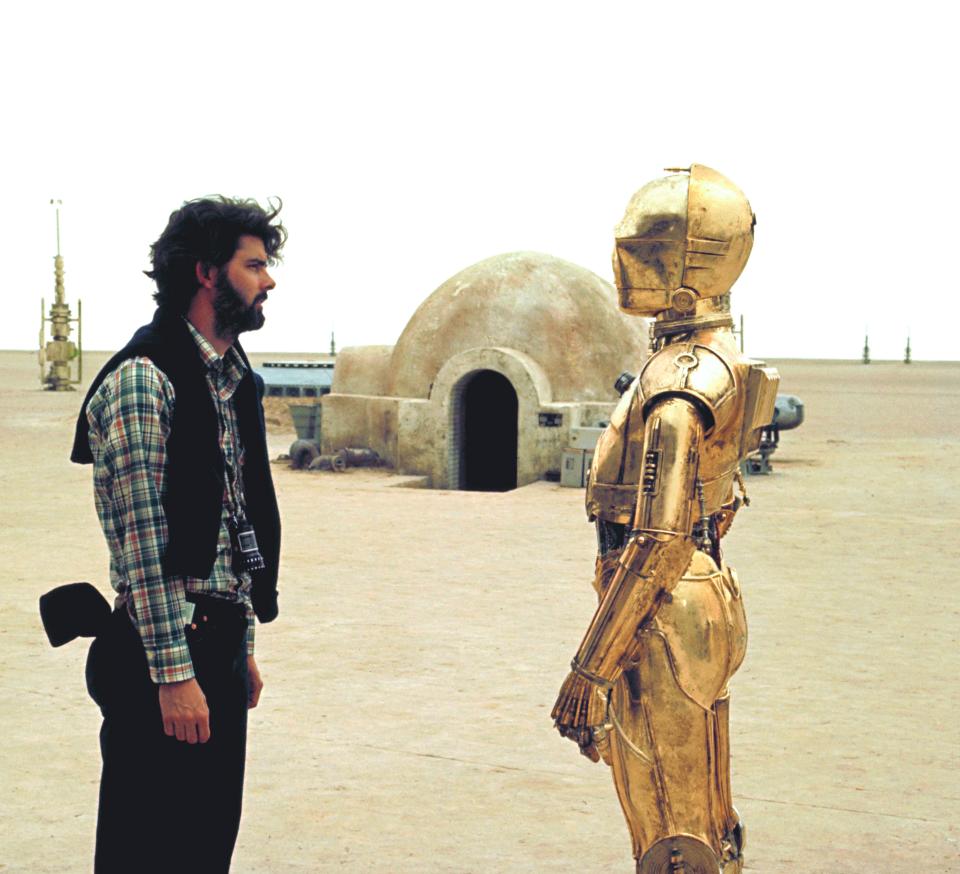
On the set of Star Wars: Episode IV - A New Hope
Any film that inspired Apple products belongs on a list of influential design movies. In a 2013 interview, Apple’s design chief, Jony Ive, called Star Wars one of his primary influences and extolled the aesthetics of the Empire’s Stormtroopers: “This idea of having the baddies in bright white shiny armor was fantastic,” he said. (You’ll never look at Apple’s curvy, glistening-white iPod, AirPods, and once-upon-a-time MacBooks and iMacs the same way.) Star Wars has even influenced itself: Reports say the newer films in the series went back to basics, referencing original art designer Ralph McQuarrie’s ’70s-era drawings for their look and feel.
American Gigolo (1980)
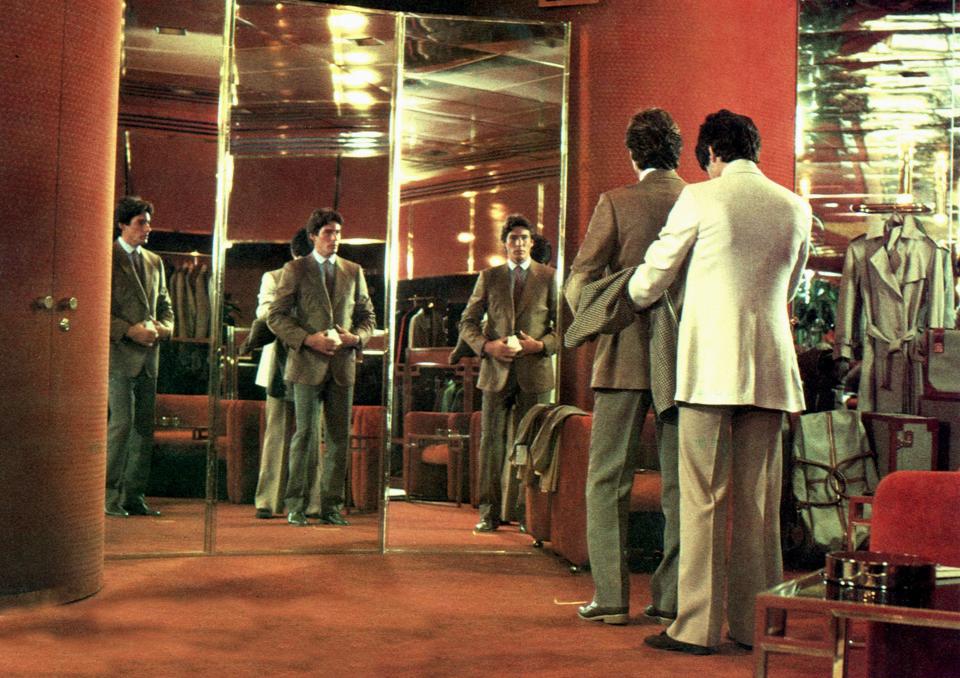
RICHARD GERE AMERICAN GIGOLO (1980)
With its monochromatic interiors, relaxed Armani suits, and Richard Gere’s infamous nude scene, American Gigolo made the first big cinematic style statement of the ’80s. While the ’70s were all about finding yourself, the new decade would be all about showing off—aesthetically, financially, and physically. Aspirational sex in designer sheets behind vertical blinds was a template followed by a decade of erotic thrillers like 9½ Weeks and Bad Influence. American Gigolo’s vision of a world so slick, transactional, and focused on photogenic perfection was later tweaked by American Psycho (both the 1991 novel and 2000 movie) and presaged the Instagram culture of today.
Dangerous Liaisons (1988)
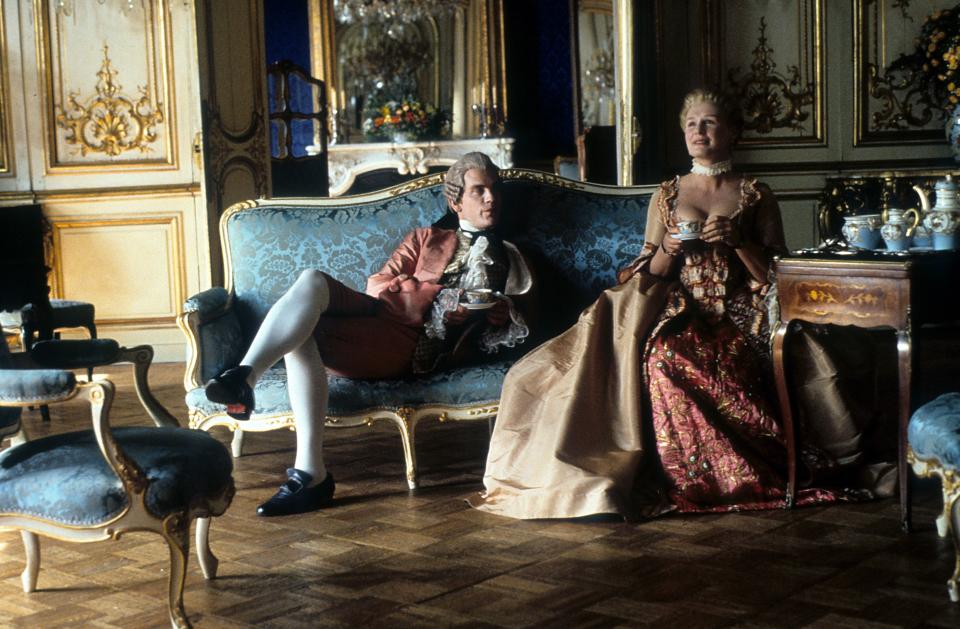
John Malkovich And Glenn Close In 'Dangerous Liaisons'
A mega-luxe version of the classic tale of lust and lechery, director Stephen Frears’s version of the late 18th-century novel Les Liaisons Dangereuses bursts out of every frame like an overstuffed bodice. Bright, shiny, gilded, powdered, and corseted, it’s essential viewing as a reference for true decadence and going too far, morally and aesthetically.
Beetlejuice (1988)
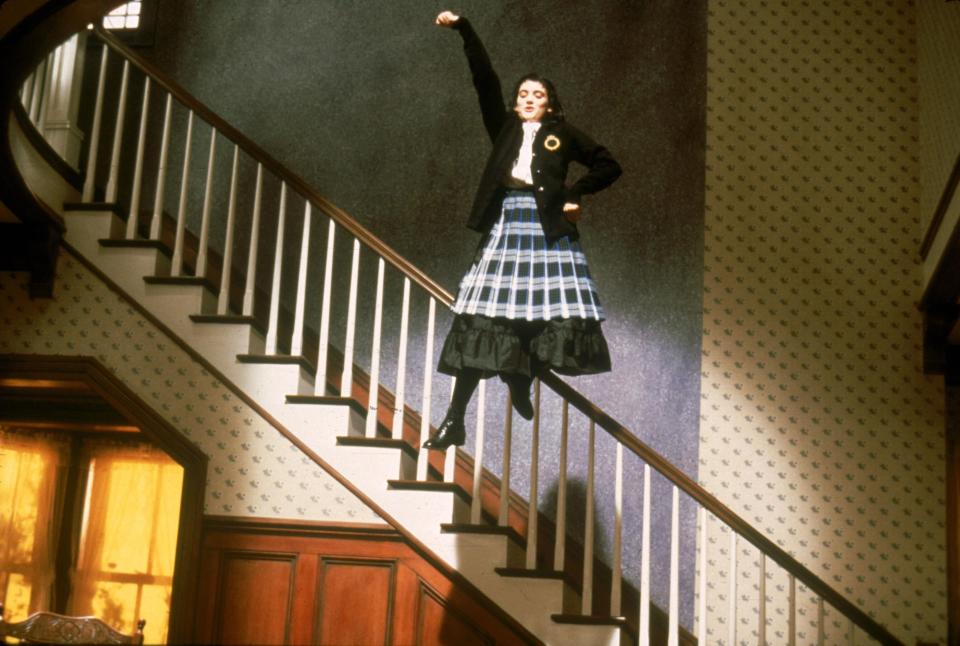
Beetlejuice
Tim Burton’s floridly effed-up imagination got its first major exposure in Beetlejuice: He hatched both a hilariously grotesque depiction of the afterlife and a hilarious sendup of mortal interior design. The priceless Catherine O’Hara plays one half of a yuppie couple who buys Alec Baldwin and Geena Davis’s quaint, antique-filled farmhouse; with the help of an over-the-top interior designer, she turns it into an ’80s nightmare, full of glass blocks, gray walls, dramatic focused lighting, and questionably attractive anatomical sculpture. Today we cringe, but how many of us are doing the modern equivalent?
Women on the Verge of a Nervous Breakdown (1988)
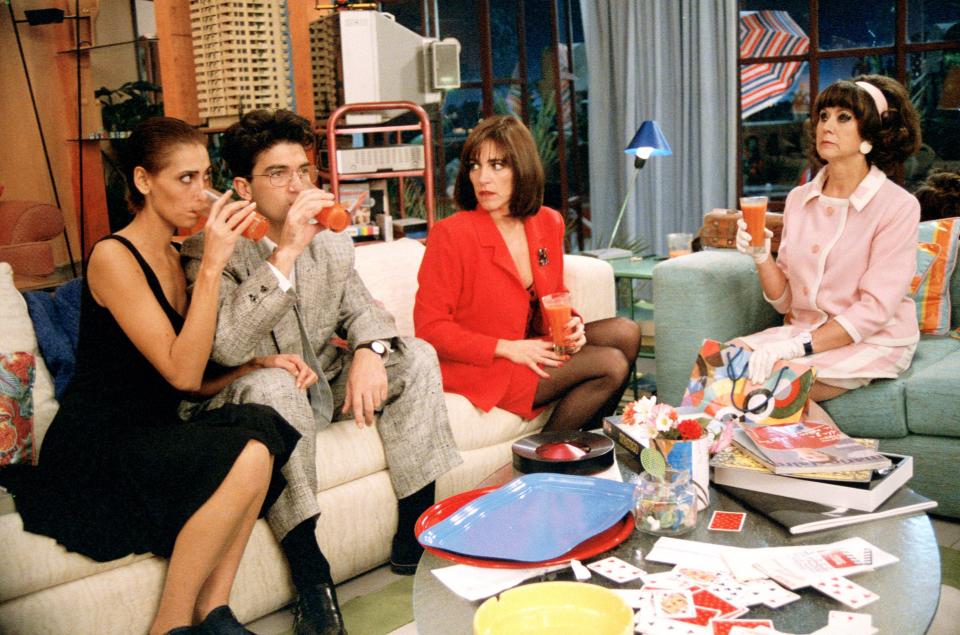
Mujeres al borde de un ataque de nervios Women on the Verge of a Nervous Breakdown Year : 1988 - Spain Director : Pedro Almodovar Maria Barranco, Antonio Banderas, Carmen Maura, Rossy de Palma, Julieta Serrano. Image shot 1988. Exact date unknown.
Pedro Almodóvar’s breakthrough is a darkly hilarious piece about how modern relationships can amount to emotional torture. Yet the backgrounds are all artifice: Candy-colored sets and props are inspired by midcentury cinematic fluff (think Doris Day movies) and graphic design (think Doris Day records). Many of the shots—as when the aggrieved heroine wakes up to a bedside table laden with four jingling vintage alarm clocks—look almost painterly. That’s intentional. “I wanted a Pop art kind of set, with pastel colors,” Almodóvar told The Guardian. “If I’d had the money and the contacts, I would have asked David Hockney to design it.” It’s a clever visual reminder that heartache makes so many of us go cinematically over the top.
Batman (1989)
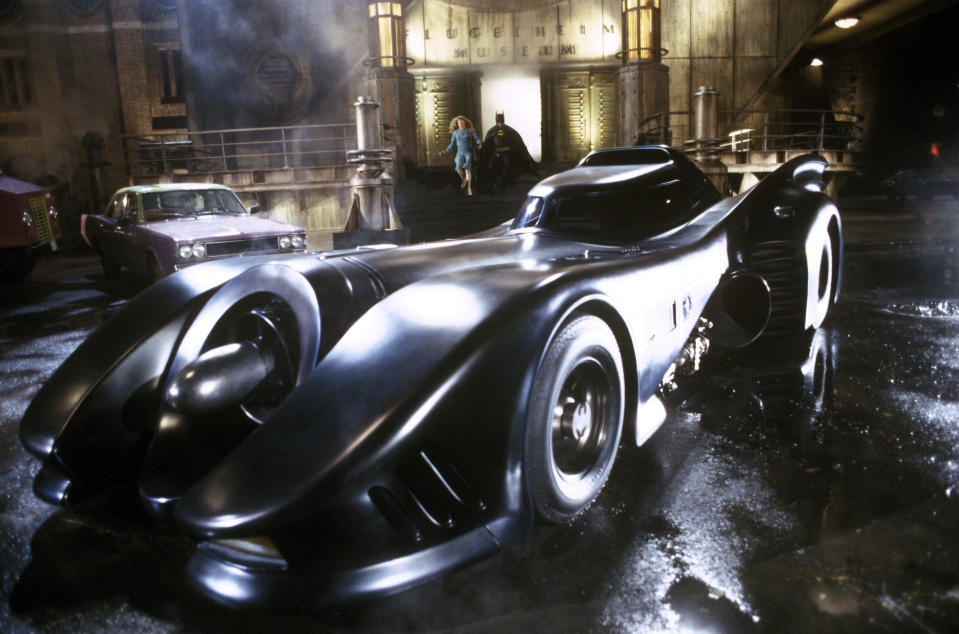
KIM BASINGER, MICHAEL KEATON, BATMAN, 1989
Tim Burton bent the glossy superhero movie (see Superman) into shadowy twists and layers—and ended up launching the whole modern comic-book-film genre. Burton wasn’t afraid of going dark to the point of being grotesque, and his vision of Gotham and the Joker has inspired a whole generation of storytellers to go deeper.
Do the Right Thing (1989)
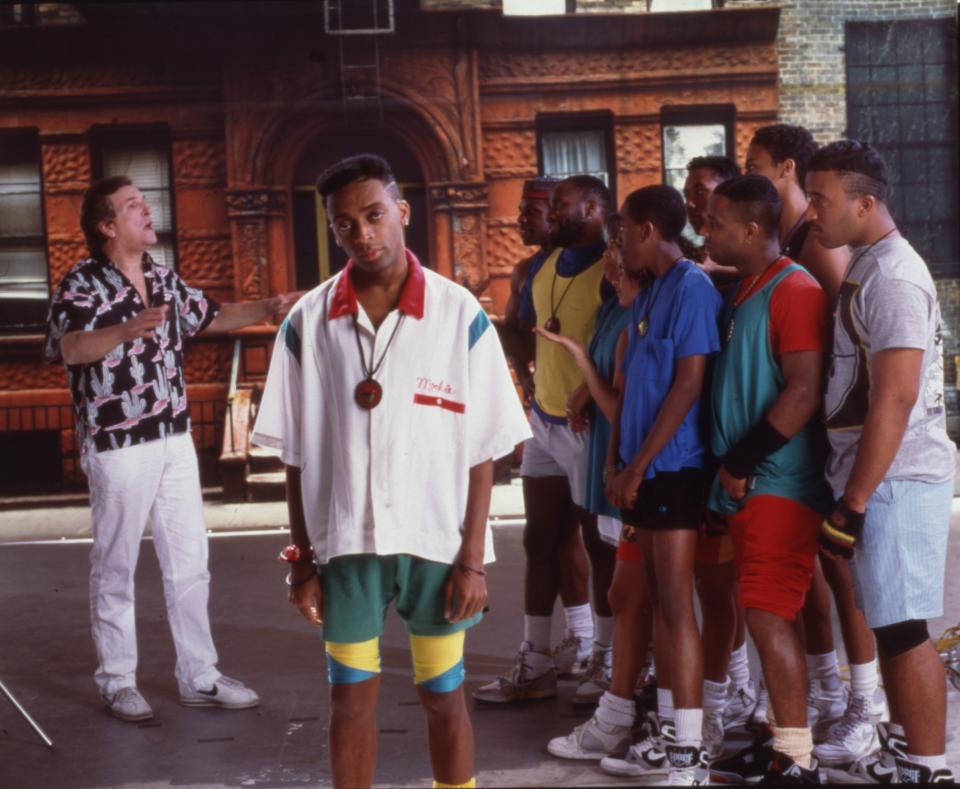
Lee, Aiello, & Others In 'Do The Right Thing'
Spike Lee’s tale of a tempestuous Brooklyn block over the course of one summer day is an eminently powerful statement on race relations, made even more impactful by its attention-demanding aesthetic. Lee had a strong design vision for the film in addition to a thematic one: “The look of the film should be bright…almost blinding Afrocentric bright!” he wrote in a journal at the time. And so it is: a memorable time capsule of late-’80s b-boy style and a city in friction.
Toys (1992)
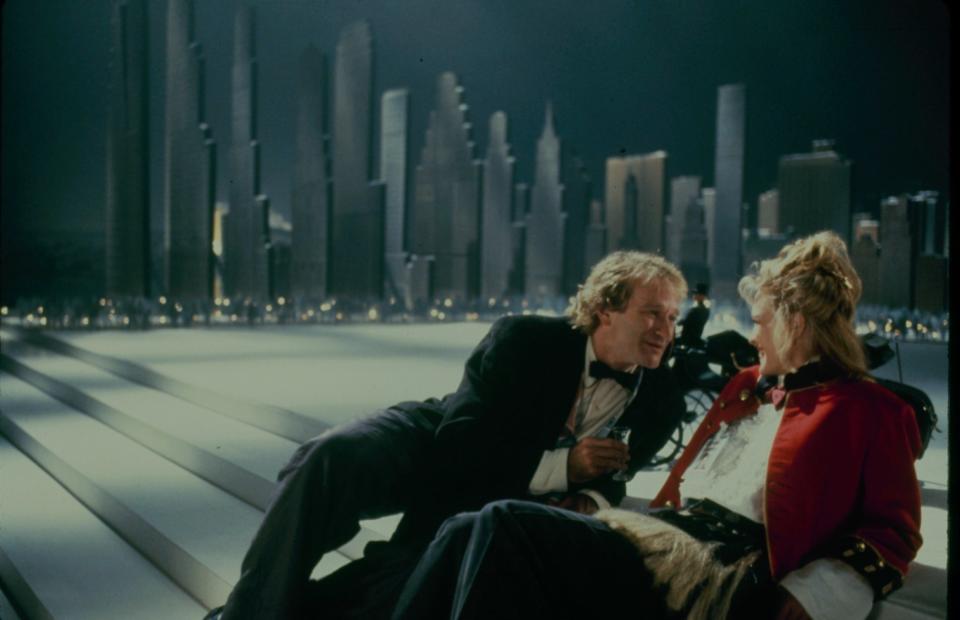
Robin Williams
A curious box-office whiff for Robin Williams and director Barry Levinson, Toys is still essential viewing for design fans. The story of a childlike inventor (Williams) who must save his family’s toy business from an authoritarian takeover, it’s part live-action cartoon, part comic book, and part virtual reality. Although the film flopped financially, it is truly visionary (and the art director and costume designer were nominated for Oscars).
Safe (1995)
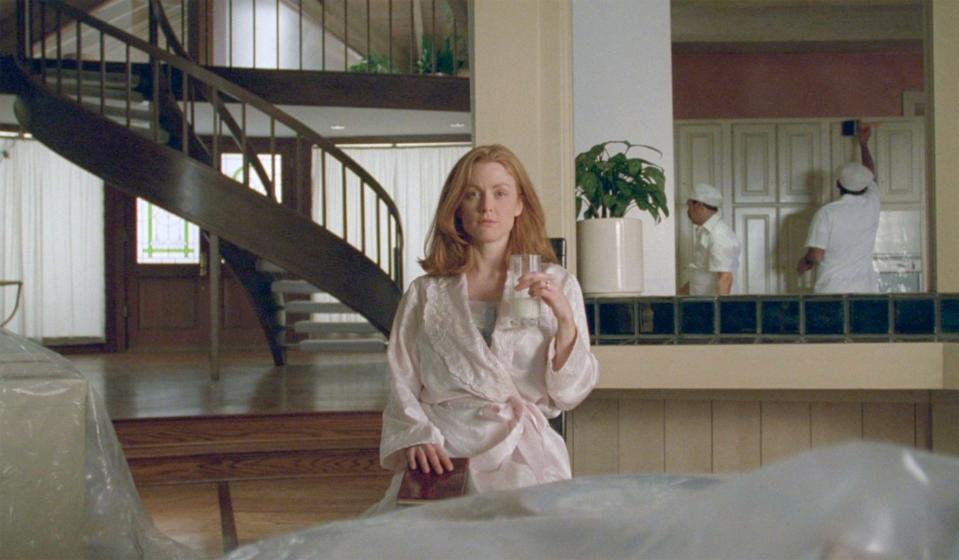
SAFE 1995 Sony Pictures Classic film with Julianne Moore
Pretty Carol (Julianne Moore) lives in a comforting sea of beiges and pastels, largely in a sprawling, earth-toned home that’s the picture of success, circa 1987. (We first sense that something is awry when the local furniture store mistakenly delivers new sofas that are—gasp!—black.) Soon Carol is having inexplicable allergy symptoms that cascade, forcing her out of her bubble. Largely composed of wide shots of soft, calming tableaus barely containing disturbing situations—Carol’s blush-and-teal bedroom, a gym and doctor’s office whose walls are inexplicably pink—the film’s interiors make a powerful statement: Do everything you can to create a cocoon, but it’s nature’s prerogative to take it away.
The Ice Storm (1997)
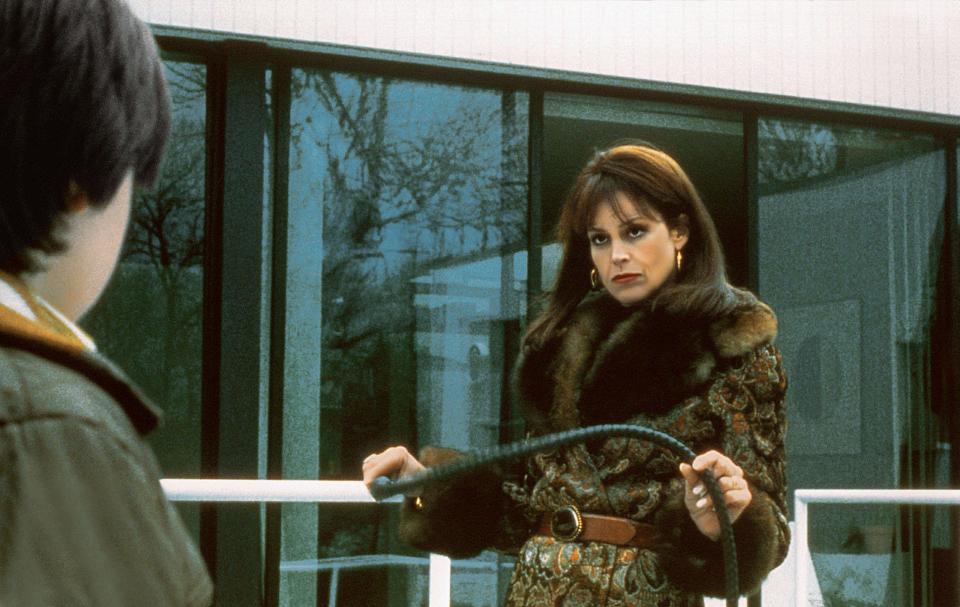
SIGOURNEY WEAVER, THE ICE STORM, 1997
The ’70s seem hard for art directors to get precisely right: Anachronisms always tend to creep in. Not so in the intricately, flawlessly art-directed The Ice Storm, and there isn’t a butterfly collar, wallpaper pattern, or you’ve-got-to-be-kidding-me piece of furniture out of place. Set in 1973 Connecticut—amid marital discord and agonizing teen comings-of-age—its utterly convincing design creates truly transporting backdrops for a perfectly written and acted story about suburban ennui at a moment of sublime cultural confusion.
The Virgin Suicides (1999)
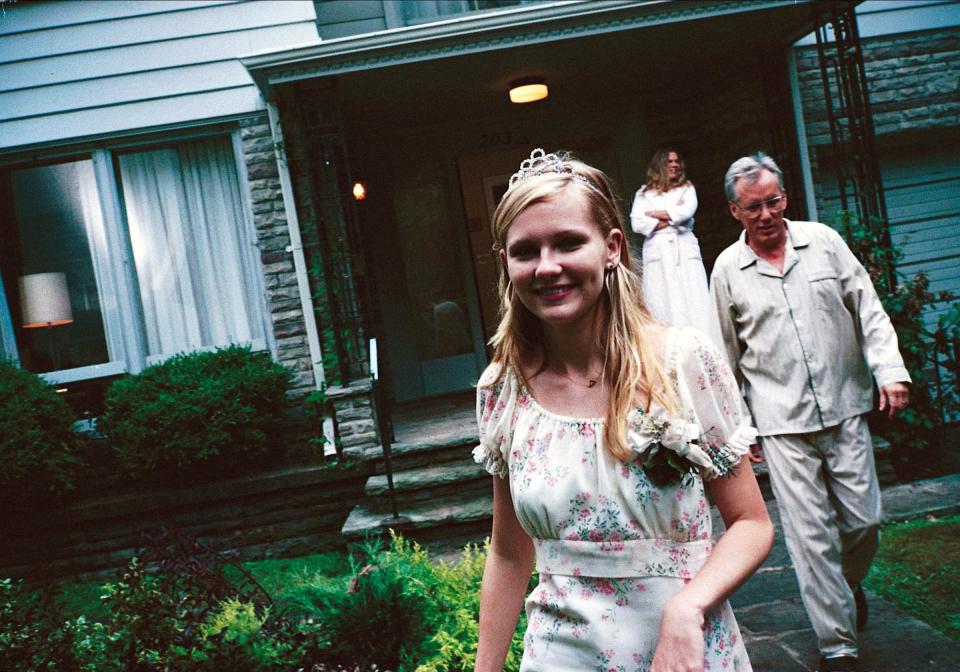
KIRSTEN DUNST, JAMES WOODS, THE VIRGIN SUICIDES, 1999
Sofia Coppola’s films tend to be acclaimed as feasts for the eyes—think Lost in Translation’s neon cityscapes and Marie Antoinette’s cakelike interiors (plus actual cake)—but her debut film was an amuse-bouche that stuck in the throat. This adaptation of the Jeffrey Eugenides novel captures the wood-paneled stasis and languid, hazy days of summer in ’70s suburbia, until the unspeakable erupts. The whole thing looks like a faded photograph, earth-toned and sun-bleached, muted and dissolute—and has been the inspiration for dozens of music videos since.
In the Mood for Love (2000)
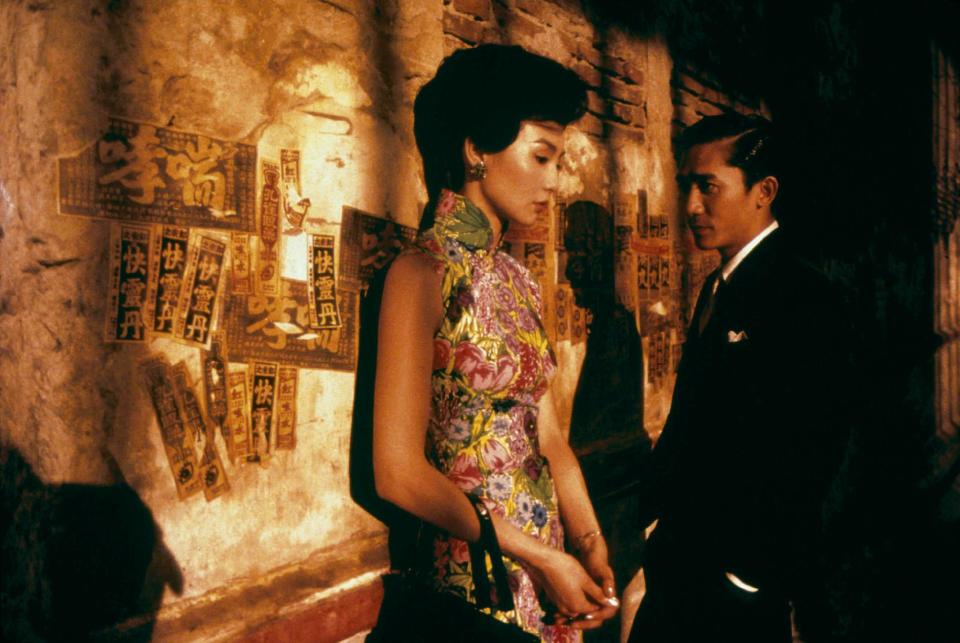
CHEUNG,WAI, IN THE MOOD FOR LOVE, 2000
Lush, multifarious, sensuous—Wong Kar-Wai’s classic romance is a design thesaurus. The story of two Hong Kong neighbors in 1962 who discover their spouses are having an affair (and yearn to follow their lead) is awash in color, pattern, mood lighting, and texture. Pulsating wallpaper and splendid fabrics—and Maggie Cheung’s seemingly endless supply of vibrantly printed cheongsam dresses—brush up against the peeling paint and cracked concrete of an overcrowded middle-class apartment block, reflecting the movie’s premise of workaday desolation interrupted by the promise of something beautiful.
Hero (2002)
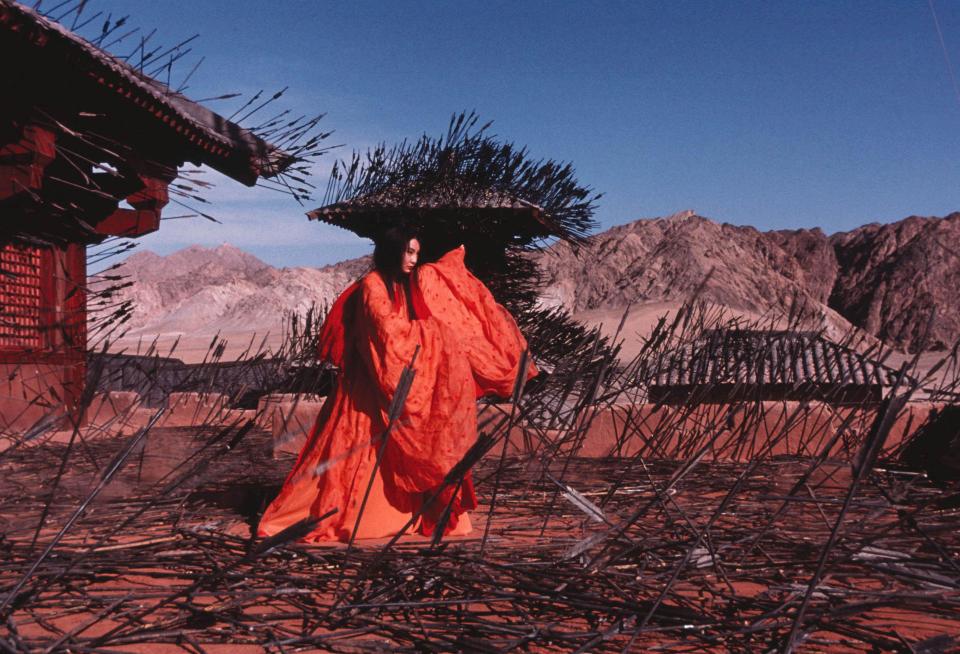
Original Film Title: YING XIONG. English Title: ANN. Film Director: YIMOU ZHANG. Year: 2002. Stars: MAGGIE CHEUNG. Credit: MIRAMAX FILMS / Album
There’s no shortage of historical epics that are “breathtaking in scope,” but Zhang Yimou’s film kicks things up several notches, combining aerodynamic fight scenes (one standout places two female fighters in the woods amid a blizzard of yellow leaves that turn blood-red at the conclusion), sweeping shots of teeming armies, and lush Chinese iconography, filmed in color palettes that shift as the film progresses—gray, crimson, blue, green—each denoting a change in narrative.
Far From Heaven (2002)
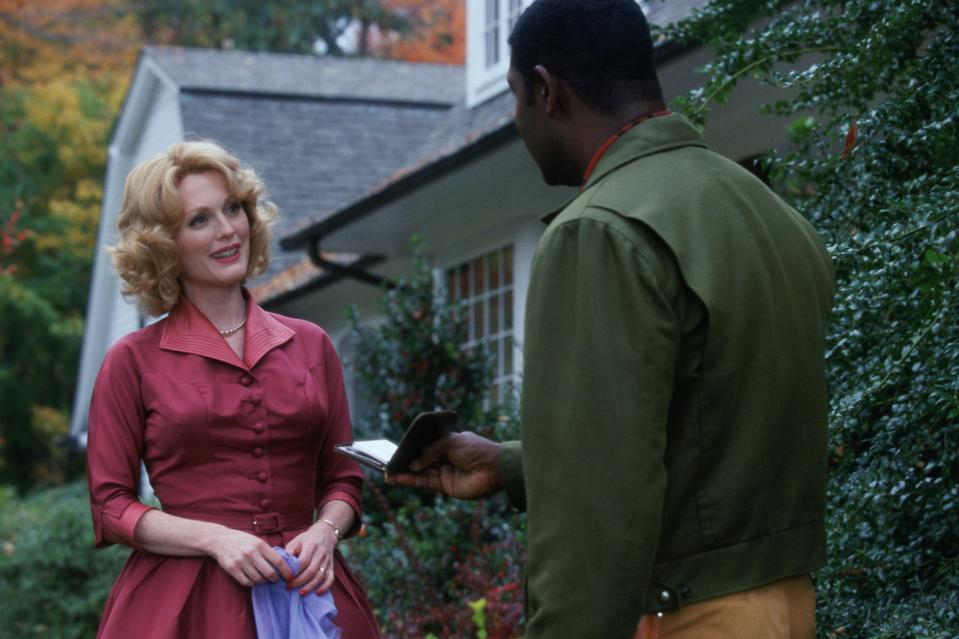
Far from Heaven Year : 2002 USA Director: Todd Haynes Dennis Haysbert, Julianne Moore. Image shot 2002. Exact date unknown.
Todd Haynes’s 2002 drama, the story of a 1957 Connecticut housewife (Julianne Moore) who is married to a closeted gay man (Dennis Quaid) and attracted to her Black gardener (Dennis Haysbert), is a miracle of design, in two senses. The film heightens the already high drama and lush visuals of ’50s “women’s pictures” without turning into camp, and its costumes and production design are surprisingly tart eye candy. Moore’s crisp crinolines, the perfect midcentury decor, the most soothing fall foliage ever put on screen: In Far From Heaven, design is as fundamental to the drama as any of the couldn’t-possibly-be-better performances. The lushness of the surroundings makes the movie’s conclusion—all the perfectly barren splendor of a society with no options outside the mainstream—that much more devastating.
A Single Man (2009)

Original Film Title: A SINGLE MAN. English Title: A SINGLE MAN. Film Director: TOM FORD. Year: 2009. Stars: JULIANNE MOORE; COLIN FIRTH. Credit: ARTINA FILMS/DEPTH OF FIELD/FADE TO BLACK PRODUCTIONS / Album
Tom Ford made his name in the fashion industry with a glossy, sexually preoccupied spin on the cuts and angles of a romantic decade gone by. Makes sense, then, that the real star of his first film is an enviably sleek midcentury-modern house. There, suicidal college professor George (Colin Firth) mourns his recently deceased partner and fumbles toward connection with a gorgeous young student, while wearing a perfectly appointed slim-fit wardrobe, amid perfectly appointed furnishings and accessories. All the slickness only makes George’s struggle with losing what’s most important more poignant; we feel it when his heart is ultimately, literally broken.
I Am Love (2009)

STILL
Equally pleasing to fans of fashion, food, architecture, and MILF sex, Luca Guadagnino’s film truly has it all aesthetically. In a super-luxe Milan villa, a rich mogul’s wife (Tilda Swinton) falls for her son’s business partner, a young, dirt-poor chef. Swinton moves from arousal to angst to action in impeccably stylish locations and costumes (Oscar-nominated), and tragedy ensues. But the film is unrelentingly gorgeous, and the scene in which Swinton is seduced by a savory seafood lunch under a spotlight is worth the price of admission alone.
The Grand Budapest Hotel (2014)
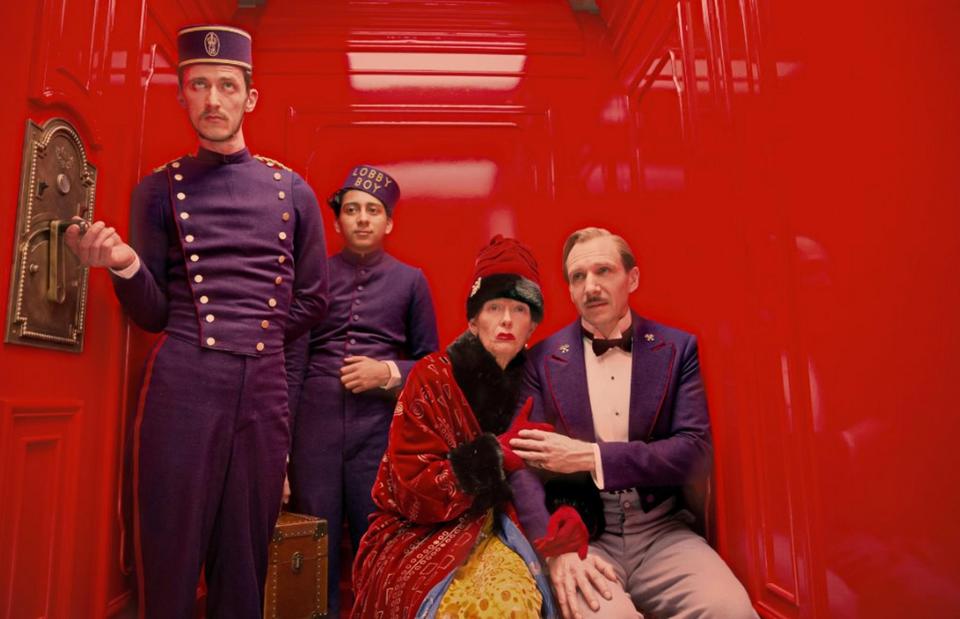
THE GRAND BUDAPEST HOTEL 2014 Fox Searchlight film with Ralph Fiennes at right with Tilda Swinton. Image shot 2014. Exact date unknown.
Wes Anderson’s films are known for their fastidious, diorama-like attention to design, which can seem fussy, fascinating, or both, depending on your perspective. (We’re really trying not to use the word whimsical here.) The Grand Budapest Hotel allows him to take a crack at luxury, and he creates a meticulous European inn with every trimming imaginable, which serves as the jumping-off point for a train voyage, estate visit, jail term, and back, every setting painted with a sparkling coat of rich, meaningful—okay, whimsical!—detail.
Black Panther (2018)
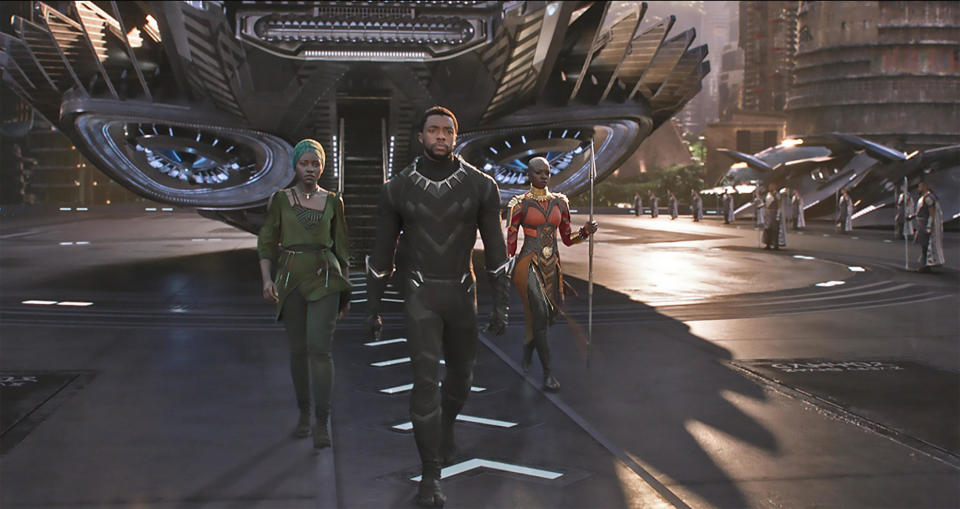
BLACK PANTHER 2018 Marvel Studios/Walt Disney Pictures film with Chadwick Boseman and Lupita Nyongo'o at left and Danai Gurira at right
Black Panther is a sleek, globe-spanning action-adventure based on the beloved Marvel comic, but it is the breathtakingly intricate costumes and the eye-popping architecture and technology of Wakanda that offer truly over-the-top thrills. Chadwick Boseman, Lupita Nyong’o, Danai Gurira, Letitia Wright, and the rest of the Wakandans defend their home from the threat of Killmonger (Michael B. Jordan) while outfitted in seemingly hundreds of pieces of a future Met exhibit, with inspirations as diverse as traditional African garb, Yves Saint Laurent, and The Matrix. Black Panther won Oscars for costumes and production design (as well as score)—proving that some of modern cinema’s most adventurous stunt work can be done with a sewing machine, the occasional 3D printer, and a lot of imagination.
The Favourite (2018)
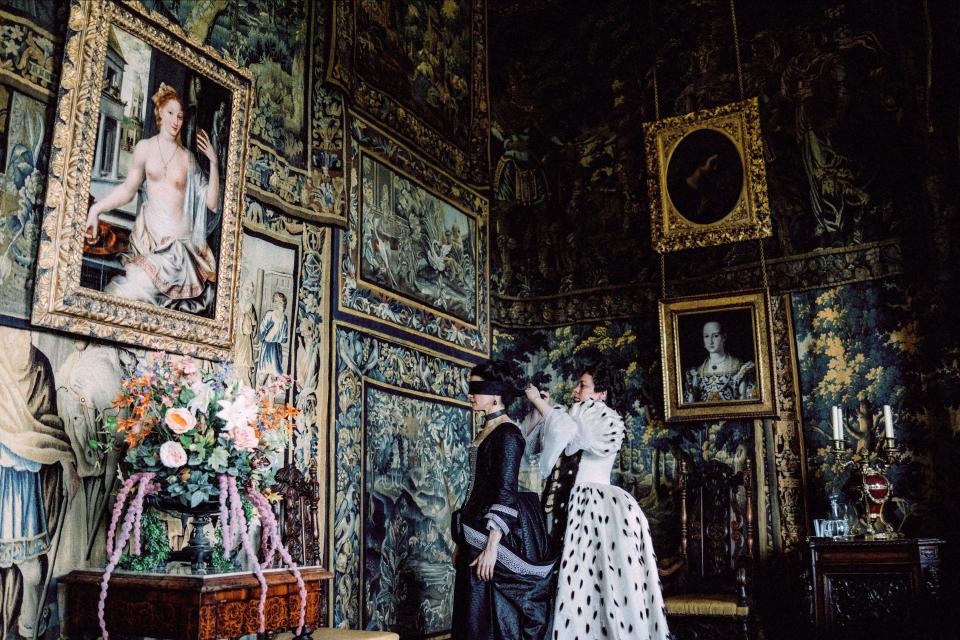
RACHEL WEISZ, OLIVIA COLMAN, THE FAVOURITE, 2018
A 17th-century Jacobean estate is the setting for palace intrigue as Emma Stone and Rachel Weisz compete for the favor of Olivia Colman’s Queen Anne. The Favourite has a lush but extremely focused aesthetic: The walls are covered with almost comical layers of elaborate tapestries that evoke a padded cell, and the queen’s sprawling bedchamber features a four-poster bed that could house a football team, but the costumes are mainly monochrome. The overall dark spareness highlights the primal emotions at play, giving the film an edge over typical gilded costume dramas.
The Last Black Man in San Francisco (2019)
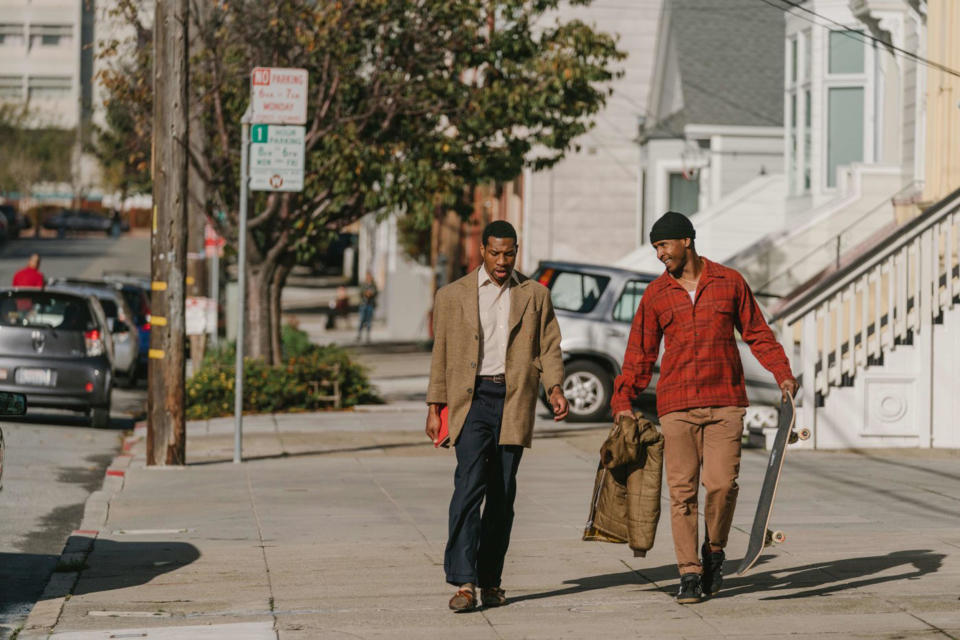
The Last Black Man in San Francisco is a 2019 American drama film directed and produced by Joe Talbot based on a story by Jimmie Fails and Talbot (which, in turn, is partly based on Fails' own life. It stars Fails, Jonathan Majors, Danny Glover, Tichina A
Rarely does a movie have architecture at its heart, much less as its soul. That’s just one of the reasons why The Last Black Man in San Francisco is so notable. The story of a Black man reclaiming his classic Victorian childhood home—or is it?—from recently departed gentrifiers, it’s especially trenchant now, as cities are rapidly changing and we reevaluate what our domestic spaces really mean (and should mean, and could mean) to our identities.
Originally Appeared on Architectural Digest

